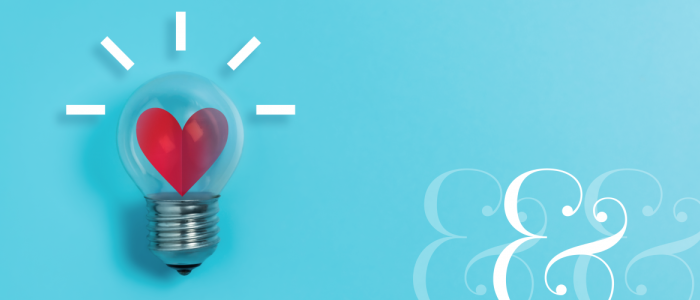
Raise your virtual hand if you believe email is a scourge of society.
Perhaps that’s a bit extreme, but chances are you’ve at least cursed in the name of email on at least one occasion. Hey, this is a safe place. No judgment here.
I’m assuming that’s why my 9 Tips for Email Effectiveness has gotten a lot of mileage over the past couple months! I debuted this master compilation at the Michigan Society of Association Executives ORGPRO 2017, Michigan’s premier education and networking convention for professionals in the not-for-profit industry in July. Just recently, they made an encore appearance at the 2017 Michigan Works! Annual Conference. From what I can tell, something really resonates with folks on this simple, but pretty overwhelming challenge to get your message read.
The tl’dr:
- Know what you’re up against.
- Watch the clock.
- Rock the subject line.
- Get composed.
- Be an effective communicator.
- Think like a storyteller.
- Avoid pitfalls.
- Be resourceful.
- Call on common sense.
Let’s dive into some tried and true ways of getting those emails read, and better yet, getting your intended outcome in every email you send!
1. Know what you’re up against.
The data is pretty darn clear here. We’re on a super steep uphill climb here - and in more ways than one.
On average, the human attention span is around 8.25 seconds. Which is less than that of a freaking goldfish. Even more depressing is the fact that back in 2000, our attention spans were four seconds longer.
We’re receiving an average of 88 emails per day and sending 34 emails per day, which means we are getting more than 2.5 times more emails than we’re sending out! Of those average 88 emails, there’s not a great chance that any one person is even going to see your email -- a good open rate is only 33 percent, after all.
And, none of this is to mention the advertising or social media or you know, real life competing for our attention!
Information technology has created a hyper-connected, over-stimulated, distracted world. On average, people spent more than 490 minutes of their day with some sort of media in 2015. In 2017, research indicates that’ll rise to 506 minutes. Every day we’re inundated with the equivalent amount of 34 gigabytes of information, which is enough to overload a laptop within a week.
I don’t have to tell you that we’re paying the price for this.
But what to do? It’s understandable that we can’t get to, let alone respond with thoughtfulness or corresponding to every email we get. What we can do is try to be the best, most efficient communicators knowing what we’re up against and using best practices when it comes to cutting through digital clutter.
2. Watch the clock.
When is the best time to send an email?
By and large, Tuesday is the best day to send an email you want to get a response to, with Thursday a close second.
Recommended times vary a bit. Some favorites are:
- 10 or 11 a.m. (late morning is a safe bet)
- 8 p.m.-midnight (because, despite being told otherwise, we check email right before bed)
- 2 p.m. (this is a popular time to take a mental break)
- 6 a.m. (once again, because 50 percent of us start our day by logging on to email!)
With all these options, it’s hard to say which will work best for you. My advice? Test them out to see what your audience likes, which should be reflected in responses and action.
3. Rock the subject line.
Your subject line is your first (and maybe your last) impression on the recipient. Remember our attention span conversation earlier? You’ve got a short window to grab someone’s attention, so starting with a well-crafted subject line is going to get you far.
What constitutes a well-crafted subject line? One that is relevant, valuable and useful to readers. The old WIIFM.
A few ways to do that:
- Highlight a reader benefit.
- Use service-based language.
- Ask a question.
- Add numbers.
- Use strong verbs.
- Create urgency.
Optimal length of a subject line is, well, subjective. Research says you can go two directions:
- Keep it short - as in under 50 characters/one or two words short.
- Make it long to convey the benefit.
This is another area where a bit of casual observation can help, too - take notice of emails you decide to open. What was it about the subject line that pulled you in?
4. Get composed.
Emails, like stories, have structure, with individual elements having their own guiding set of best practices.
Generally, shorter is better here, with experts recommending sticking to five sentences. This may be tough in some cases, but give it a shot and see where you get.
Developing a personal email structure can help with getting a response. Recipients know what to expect and can follow your formatting easily. A great structure to start with is:
- Greeting.
- Pleasantry.
- Specific reason for email.
- Specific call to action.
- Closing to reiterate call to action.
- Signature.
A few more composition tips:
- Messages should be focused and clear. Identify what your purpose is for sending the email, before even beginning to type.
- Embrace organization. Use numbers and bullet points and call out important details with bold or underlined text.
- Keep paragraphs short.
- Font should be plain and simple. Avoid special fonts or colors.
- Active voice is better than passive voice.
- Proofread. Look for errors and determine if your request is clear or tease out any room for misunderstanding.
5. Be an effective communicator.
Basic communication principals can help us write better emails, and writing better emails can help us be better communicators!
We’ve talked about structure a lot, and it should be no surprise that while communication is key; effective communication is king. And the secret to effective communication is structure.
Research has shown that people will retain structured information up to 40-percent more accurately than information that is presented without structure.
Take one of these two tried and true structures for a spin:
I also love this list of qualities of great communicators, inspired by an Inc. article.
- Great communicators don't make assumptions that don’t have a real basis.
- Great communicators don’t have unspoken expectations
- Great communicators ask a lot of questions.
- Great communicators are truly interested in the other person.
- Great communicators take themselves out of the equation and provide value to the other.
6. Think (and write) like a storyteller.
The human brain loves stories and illustrations. Harvard research shows that when a speaker uses stories and illustrations, the audience remembers the content they hear up to weeks later. Stories activate multiple areas of our brains and can often encourage us to act.
What shape can your stories take?
- Case studies.
- Reasons why stories.
- Origin stories.
- Vision stories.
- Rapport building stories.
We become better storytellers by listening to and observing other storytellers to help shape our own personal style of storytelling.
7. Avoid pitfalls.
Raise your hand if you’ve ever had an email backfire on you…
Emails are fraught with opportunity for misinterpretation. Why? Well, science, actually.
Research has shown that when we receive an email, we’re predisposed to view the tone of that message negatively–or at least more negatively than the sender intended it, due to the lack of a feedback loop in emails.
How can we avoid predisposed negativity and falling prey to a negative feedback loop?
- Avoid commands.
- Emphasize benefits.
- Provide context and communicate progress.
- Acknowledge workload.
- Don’t underestimate enthusiasm.
8. Be resourceful.
Sometimes, we need to call in reinforcements. Luckily, there is no shortage of tools and apps out there to help you write emails more effectively, thus communicating more effectively.
A few tools and apps to try:
- Respondable/Boomerang.
- Hemingway Editor.
- Crystal. (This one is a little creepy.)
- Just Not Sorry.
And, new tools are moving beyond email to improve productivity and engagement.
9. Call on common sense.
It’s easy to forget manners or the golden rule, especially in the fast and furious world of email.
A few common sense reminders to help:
- When you’re tempted to hit send when angry or frustrated, try this instead:
- Save the message as a draft.
- Take a breath (or two, or three).
- Return to the email.
- Envision yourself as the recipient of the message -- would they think the message has a positive or negative tone?
- Revise as you see fit.
- Remember to keep your messaging human.
- “You” is the most powerful word we have to connect. Shift from me, my, our, we language to YOU language, aiming for 70 to 80 percent of your language focused on the “you.”
- Did you check your to field? Are people’s names spelled correctly?
- Anyone on the thread you don’t want there? A Cc: that should be a Bcc:?
- Think twice before hitting Reply All. Please.
- Be cautious with humor.
- Knowing when to pick up the phone is powerful.
- Proofread, proofread, proofread.
- Remember, nothing and I mean nothing is confidential.
Practice what you preach - respond! Let people know you’ve received their email. It will result in better communication moving forward. What tips for email effectiveness would you add?



